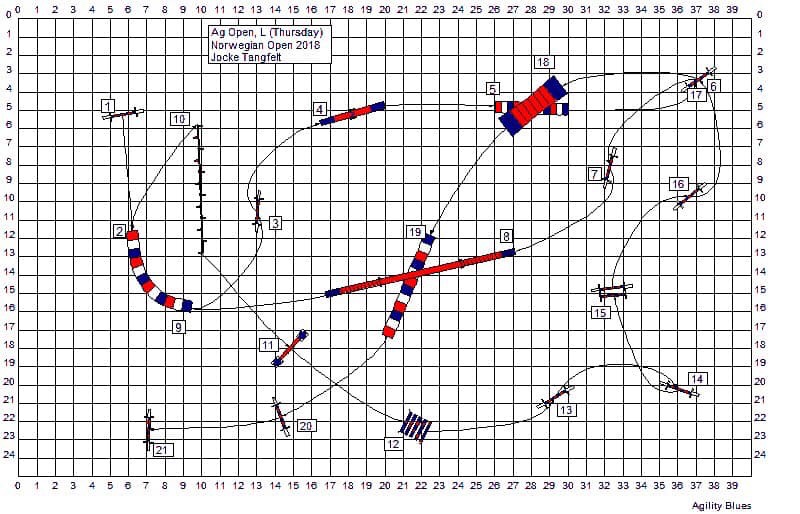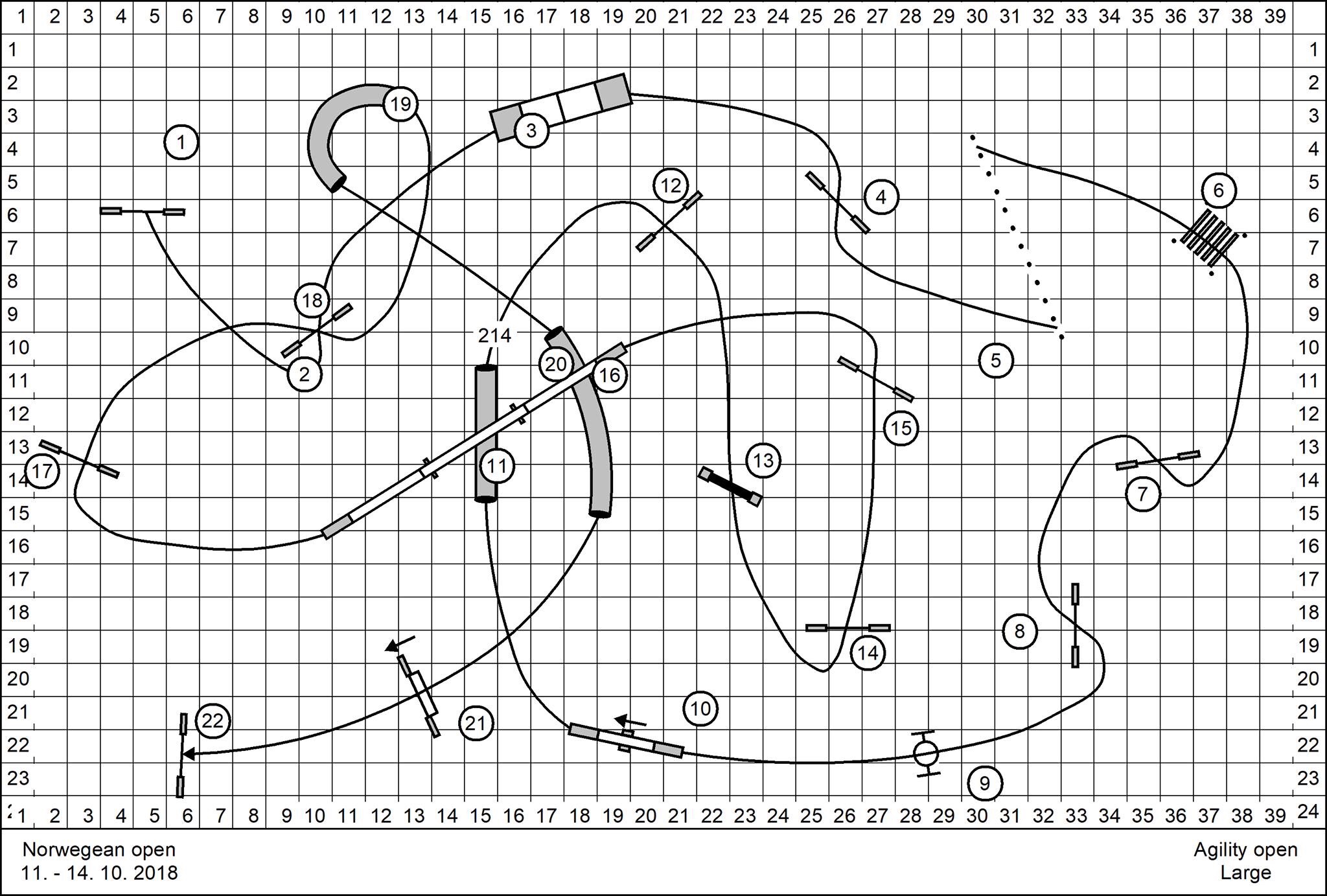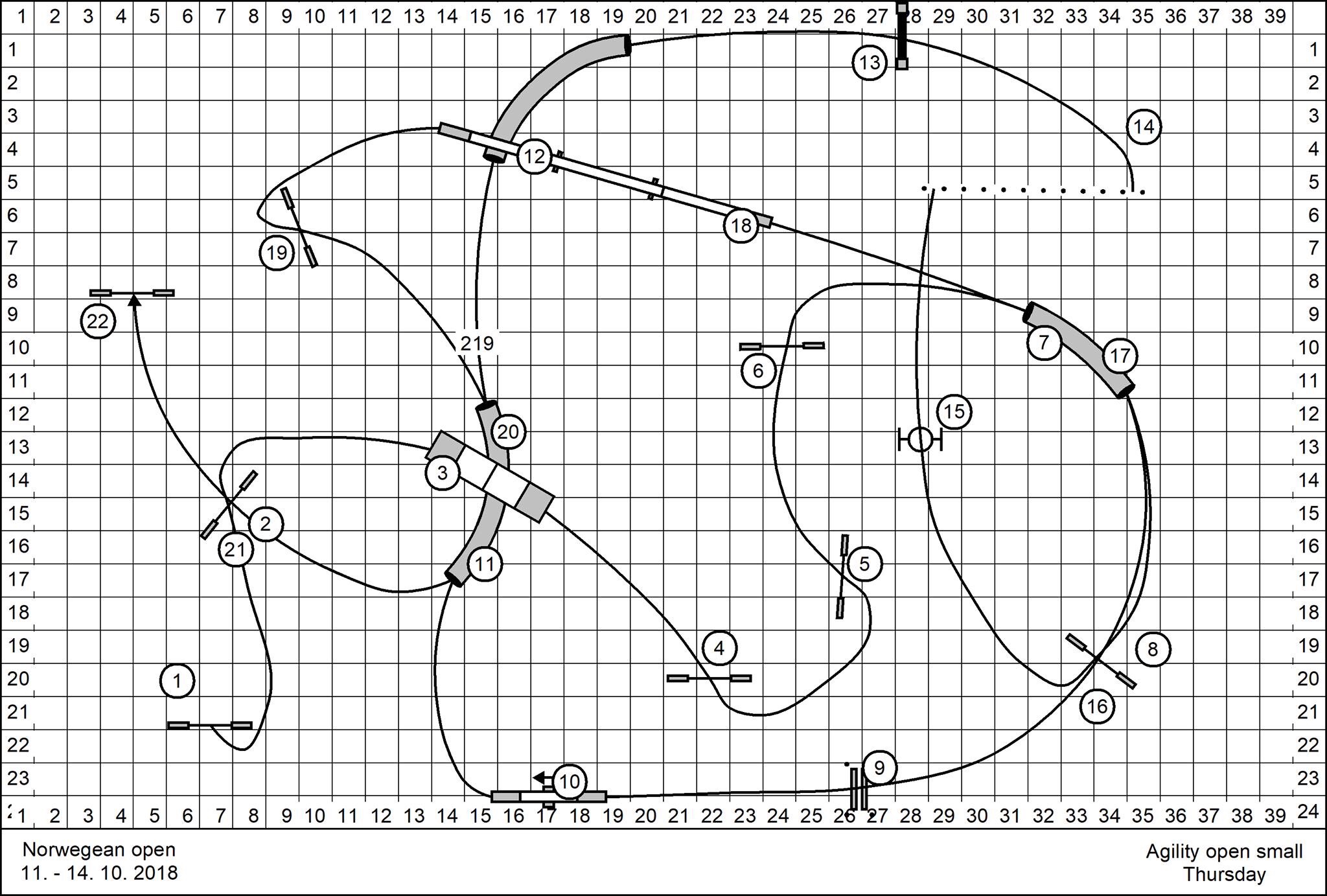One course design trend that kept popping up at Norwegian Open was the tunnel under the dogwalk leading to a jump that the dog had to find on his own. A surprising number of dogs had trouble with finding the jump and ran past it or took another jump. Here are some examples from NO:

Jocke Tangfelt’s open agility course for large dogs were one of my favorites to run. The ending was tricky for a lot of dogs. They’d either run past #20 or take the wall jump instead. I was confident that Bud would do it nicely, and he did. Partly because he is good at finding jumps and listening to his “jump” cue, and partly because I was placed well. Trusting the A-frame contact means that I could just run and be in a good position for the ending.

Petr Pupík’s open agility course for large dogs had two instances of layering the dogwalk that caused trouble for dogs and handlers. Many dogs ran past #12 or #21. I’m still very sad that we had so many mistakes in this run that I didn’t get to run it properly. We had a misunderstanding before the weaves (costing time) and then three bars down, which just made me give up at the end so that I sent Bud into the wrong tunnel. I wish I had another chance at it because I really loved the course. Number #12 was very nice though.

This third example is also from Petr Pupík, but for small dogs so I didn’t run it. It looks like #13 after the tunnel under the dogwalk is a big challenge and I’d love to run this course as well. Having an independent seesaw and being able to send the dog through the tunnels from a distance seems to be an advantage, as well as being able to handle 13-14 while staying on the exit side of the weaves. I’d love to see a video of someone executing this nicely! To me, it’s not so much about being able to run as it is a challenge in training and independence.
Teaching the dog a good jump cue and making sure it’s working at a distance is one big part of managing these kinds of courses. It’s also important that the dog knows when to come out of a tunnel looking ahead and when to come out looking for the handler. It’s good to get the dog used to that you’re sometimes on the other side of a dogwalk or set of weaves, but mostly it’s about that very basic training that you can do with one tunnel and one jump.



Leave a comment